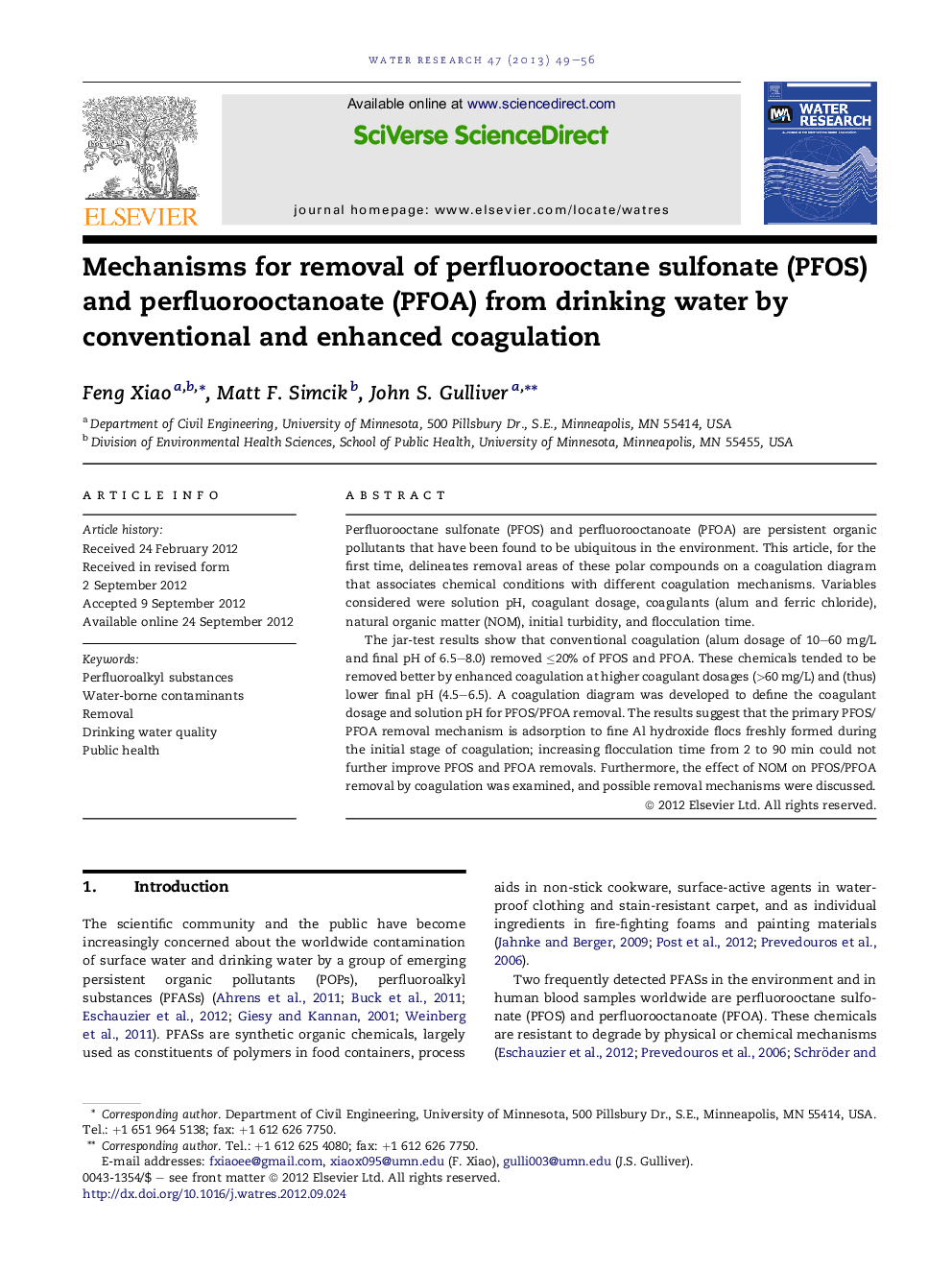| Article ID | Journal | Published Year | Pages | File Type |
|---|---|---|---|---|
| 4482514 | Water Research | 2013 | 8 Pages |
Perfluorooctane sulfonate (PFOS) and perfluorooctanoate (PFOA) are persistent organic pollutants that have been found to be ubiquitous in the environment. This article, for the first time, delineates removal areas of these polar compounds on a coagulation diagram that associates chemical conditions with different coagulation mechanisms. Variables considered were solution pH, coagulant dosage, coagulants (alum and ferric chloride), natural organic matter (NOM), initial turbidity, and flocculation time.The jar-test results show that conventional coagulation (alum dosage of 10–60 mg/L and final pH of 6.5–8.0) removed ≤20% of PFOS and PFOA. These chemicals tended to be removed better by enhanced coagulation at higher coagulant dosages (>60 mg/L) and (thus) lower final pH (4.5–6.5). A coagulation diagram was developed to define the coagulant dosage and solution pH for PFOS/PFOA removal. The results suggest that the primary PFOS/PFOA removal mechanism is adsorption to fine Al hydroxide flocs freshly formed during the initial stage of coagulation; increasing flocculation time from 2 to 90 min could not further improve PFOS and PFOA removals. Furthermore, the effect of NOM on PFOS/PFOA removal by coagulation was examined, and possible removal mechanisms were discussed.
Graphical abstractFigure optionsDownload full-size imageDownload high-quality image (159 K)Download as PowerPoint slideHighlights► A mechanistic insight into the fate of PFOS and PFOA during coagulation. ► Variables considered include natural organic matter, flocculation time, and pH. ► A coagulation diagram was developed for predicting and interpreting PFAS removals.
